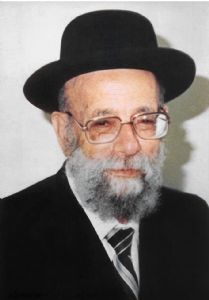A Short Tribute
Hacham Yehuda Tzedaka, son of Simcha and Shaul, was born in 1910, in Jerusalem. He attended the Bnei Zion Talmud Torah as a child and then went on to study at the Porat Yeshiva yeshiva. In 1934, he married Fahima Battat and the couple went to live in Jerusalem's Geula neighborhood. He spent his last years living in the Beit Israel neighborhood.
In 1937, he was appointed by Hacham Ezra Attiah, his principal teacher, to teach at the Porat Yosef yeshiva; in 1970 he was appointed Rosh Yeshiva at Porat Yosef.
His wife died in 1979 and Hacham Yehuda Tzedaka was married a second time, to Tamar Soudri, the daughter of Maimon Soudri, who served as beadle of the Porat Yosef yeshiva in Jerusalem's Old City.
Hacham Yehuda Tzedaka passed away on 12 Heshvan 5752 (1991), and lies buried in the Sanhedria cemetery in Jerusalem.
A few quotes from the Rabbi on 'Customs of Israel' in which he shares the reason for holding the lulav in the right hand and the Etrog in the left
"Rabba said, the lulav in the right hand and the etrog in the left. What is the reason? These constitute three mitzvoth, and this [etrog] is one mitzvah. This can be understood to mean that the Gemara asks, "What is the reason for holding the etrog in the left hand?" Does the etrog not represent the complete Torah scholar, as we mentioned, and is the finest of all, in that it has taste and aroma? Isn't it more appropriate to hold it in the right hand? This is the Gemara’s reply: The lulav constitutes three mitzvoth – lulav, hadas and 'arava – while the etrog represents a single mitzvah, which gives them precedence over the etrog.
The Gemara seeks to indicate that if the complete Torah scholar, who has all the good attributes, does not carry the community's householders and common folk along with him – meaning the scholar does not give classes to the congregation - even if that person is great, the lulav which is lesser is preferable, for it carries the hadas and 'arava with it.
Kol Yehuda, Sha'ar HaAgaddah, p. 84/ Printed by the author's sons, Jerusalem, 1995
